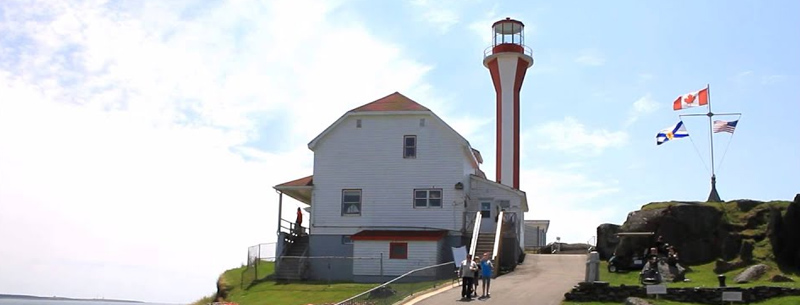Welcome to Yarmouth & Acadian Shores in Nova Scotia. Here, where the distinctive flag of the Acadian nation flies proudly throughout scenic communities, cultures combine to give you a rich experience steeped in warm hospitality. Explore the Towns and Communities along the Yarmouth & Acadian Shores:
Argyle
Argyle s made up of 1500 square kilometers of both coastal and inland communities. Whether it’s the scenery, history, or even just for a bit of relaxing fishing, our communities are the ones to visit to guarantee great vacation memories. Our southern location in this beautiful province offers both residents and visitors the best of small-town living.
We have a population of approximately 8700 people with roughly 65% being francophone- mostly of Acadian descent. In addition to the rich Acadian heritage we also boast a vibrant Loyalist, Métis, Planter, and Mi’kmaq culture. Argyle is uncrowded and natural and is renowned for its ties to the sea and prides itself in sharing our way of life with our visitors.
We are a diverse area with a rich heritage, and many friendly people that will always welcome you and make you feel at home. Fresh seafood, clean natural surroundings, as well as many great festivals and activities for all to enjoy.
St. Bernard/Belliveau Cove
St. Bernard/Belliveau Cove area marks the boundary of the largest Acadian region in Nova Scotia. The village experiences the majestic Bay of Fundy tides that have an amazing 28-foot range. When the tide is out, Belliveau Cove is a popular clamming area. Visit the Joseph and Marie Dugas Municipal Park, named after the first Acadian couple to arrive in the area in 1768, with its wharf, lighthouse, and nature trail bordering the shoreline.
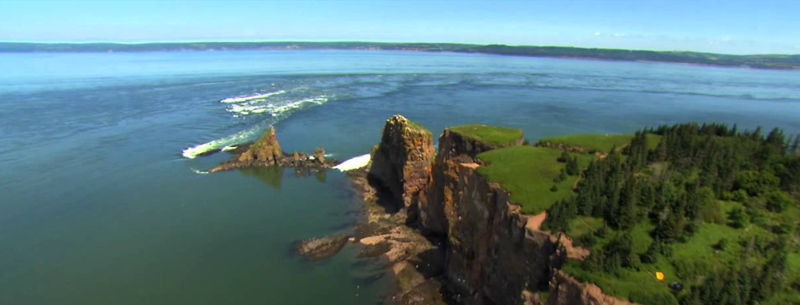
- Acadian Cemetery: At Major’s Point, visit the first Acadian cemetery dating from 1755 and The Little Chapel or “La petite Chapelle”.
- Joseph and Marie Dugas Municipal Park: The ocean side park offers a 5 km nature trail along the shoreline and freshwater wetlands complete with benches, boardwalk, and interpretive panels. Site of Festival Joseph et Marie Dugas.
- Saint Bernard Church: The most majestic church in Yarmouth & Acadian Shores; it seats 1010 people and took builders 32 years to construct! Tours onsite.
- Farmers Market every Saturday between 9 am and 1 pm from May 25th to Sept. 28th at the Joseph and Marie Dugas Municipal Park.
Carleton/Kemptville
Carleton and Kemptville are inland villages. They have a calm pace and are laced with trees and a cool breeze that drifts off their respective rivers. In the fall, rustling leaves can be heard and the changing of colors is a photographer’s dream. The villages are a popular spot for sport fishing, having many lakes and rivers to test your luck. Fished species include bass, pickerel, perch, and trout. Fishing licenses are available in the village country stores.
- Freshwater Fishing: try your luck at fishing freshwater species in inland Nova Scotia. The season runs from April 1 through October.
- Tobeatic Wilderness Area: canoe, hike, or camp the largest protected wilderness area in the Maritimes. The Tobeatic protects remote and undisturbed wildlife habitat, expansive wetlands, pockets of old-growth pine and hemlock forest, and the headwaters of 9 major river systems flowing to both the Atlantic and Fundy coasts.
Kejimkujik National Park
Approximately 40 km inland from the Bay of Fundy, Kejimkujik National Park lies in the center of traditional canoe routes between the Bay of Fundy and the Atlantic Coast. The earliest inhabitants were Maritime Archaic Indians, nearly 4,500 years ago. The Mi’kmaq are descendants of these people and have called this area home for the last 2,000 years. Their petroglyphs, faint images inscribed in soft slates, represent the lifestyle, art, and observations, and include stylized men and women in traditional dress, wildlife, hunting and fishing scenes, outlines of hands and feet, and many other subjects.
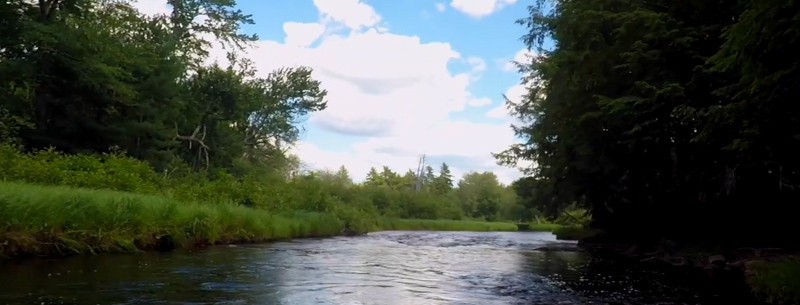
- Paddle historic waterways in your own boat, a rental craft, or as part of a guided group in the giant 11-meter team canoe.
- View Mi’kmaq petroglyphs from the 18th and 19th centuries
- Let the kids enjoy a special guided, interpretive walk, hike or bike outing
Cape Forchu
Cape Forchu is home to the Yarmouth Lightstation, one of the most scenic lighthouses in Nova Scotia. The Light (as it is locally known) rises 23 meters above the ground, and its two-million candlepower beam can be seen over 30 nautical miles out to sea. It is located at the end of a 12 km stretch of road through fishing villages along the coast. Bring your camera and set aside some time, as there are many opportunities for vacation memories.
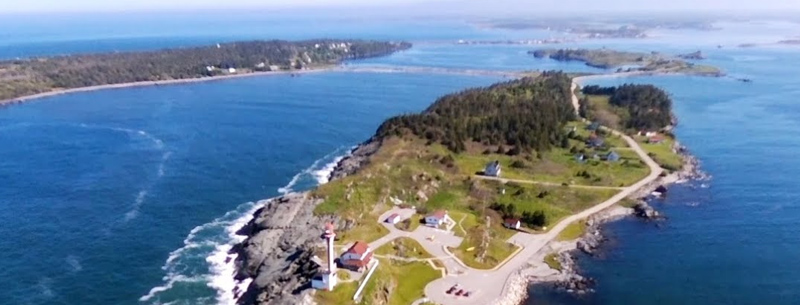
- Stanley Lobster: a lobster storage operation that will show you how to store and cook lobsters.
- John’s Cove/Yarmouth “Bar:” a working wharf that is full of boats, fishermen, and photo spots. Feel free to explore and take your picture by the stacks of lobster traps sitting on the side of the road.
- Yarmouth Lighthouse: onsite services include a museum, tea room, walking trails, picnic area, and a shop.
Pinkney’s Point
Almost an island, Pinkney’s Point is reached by a 2 km stretch of road winding through expansive saltwater marshes. A large breakwater along with the roadblocks the Atlantic wind and waves and creates a rocky beach that beckons treasure seekers. The village itself has a population of about 300 people, most of whom make a living from the sea. Pinkney’s Point is a hidden jewel of Yarmouth County for its simple isolation- but there are no services along the road or in the village.
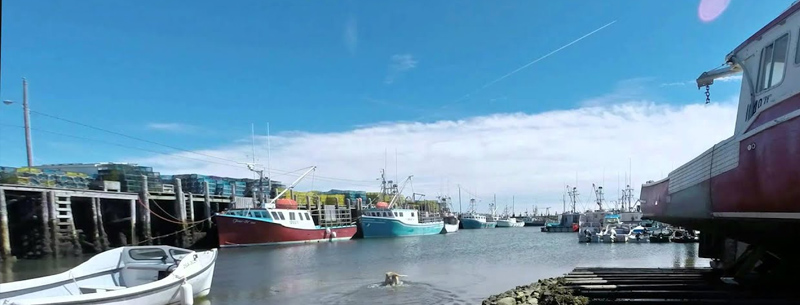
- Bicycle Tour: a flat terrain with stunning coastal vistas. Be sure to bring your camera.
- Coastal Hiking: walk along the rocky beach finding treasure and watch the waves crashing along the shore.
- Birding: many migratory birds appear along the shore, in ponds, and in the salt marshes. Oft spotted species include sea ducks & alcids (including dovekie).
Wedgeport
This Acadian fishing community was once known as the Sport Tuna Fishing Capital of the World. It attracted famous visitors from around the world such as Babe Ruth, President Franklin D. Roosevelt and Ernest Hemingway who would visit for the World Tuna Cup Match. Its successor, the August Tuna Tournament, is an event not to be missed. Participants must register in advance, as it fills up quickly. Oh the fish tales…!
- Sport Tuna Fishing Museum: Test your strength in the “fighting chair” on a 1940s Tuna Cup boat. Many other fishing exhibits as well as a touch tank on site.
- La Butte de la Croix: location of the first mass celebrated by the returning Acadians in 1769. The on-sight observation platform offers a beautiful view of the salt marshes sprawled below.
Pubnico
This proud community’s very essence is founded on Acadian and fishery heritage and traditions. Listen closely for the “patois Acadien” spoken in the villages: this is actually a 400-year-old dialect from northern France. Not to worry though, all are also fluent in English, and graciously welcome you to the Pubnico.
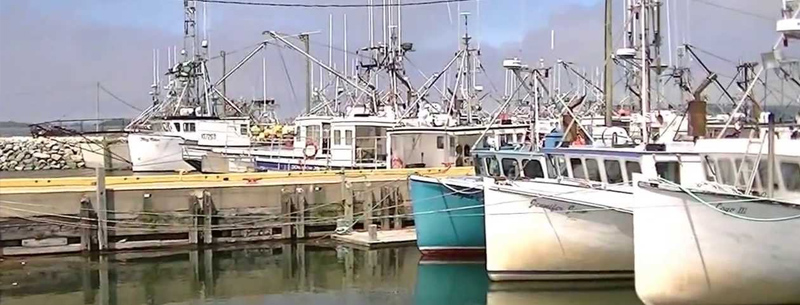
- Village Historique Acadien de la Nouvelle Écosse: a living history village features pre-1920 Acadie activities including dory-making, turning the fog horn, and harvesting salt hay.
- Musée Acadien & Research Centre: a collection of artifacts and historical and genealogical documents in an 1864 homestead. Participate in Acadian workshops that take you back in time.
- Pubnico Wind Farm: Take a walk below these 17 massive windmills, their names are written at the base of each tower, which overlooks the rocky coast of the Pubnico Harbour.
- Golf: The West Pubnico Golf & Country Club has one of the longest golfing seasons in Canada, from March through to November. This 18-hole course is one of the “Affordable Four” that this region is proud to showcase.
Town of Yarmouth
Yarmouth was considered the richest small town in the world from 1830 to 1880. Today it is the hub of Yarmouth & Acadian Shores. The old prosperity of Yarmouth becomes reality while visiting the many historic homes. Enjoy shopping on the bustling Main Street with its 30 unique retailers of high-quality treasures and walk the working waterfront. Historic Walking Tour: a self-directed 4 km (2.5 miles) tour covering 26 mansions, museums, points of interest, and seven architectural types.
- Guided Walking, Bus and Boat Tours: daily guided tours and interpretation signage give an excellent introduction to Yarmouth’s waterfront and harbor, and the entire region.
- Yarmouth Garden Tour: this self-directed tour allows you to discover the many gardens throughout the town.
- Events: Seafest, Shark Scramble, Sou’West Nova Bike Rally, the New York Islanders-there are many events to entertain.
- Museums, Archives, and Galleries: Visit a historical, fishing, or fire fighter’s museum. Tour a Victorian mansion or a restored shipping office. Sketch at the Art Gallery of Nova Scotia, Western Branch. Research your roots at the historical archives.
- Yarmouth Links Golf: the rolling fairways, small lightning-fast greens and unpredictable ocean breezes all combine to provide a challenge for any golfer.
- Playgrounds & Frost Park: Enjoy the playgrounds and parks and let the children play. Locate the “echo circle” at Frost Park.
- Th’Yarc Theatre: a 352 seat theatre, features a large variety of live plays and concerts.
- Mariner’s Centre: a local multi-purpose facility that hosts many events and concerts throughout the year.
Port Maitland
Port Maitland is home to one of Nova Scotia’s Provincial Parks – Port Maitland Beach, a popular spot for family BBQs, fun days or to enjoy the surf, sun, and sand. The beach stretches for 1 km (0.6 mi) and is a favorite spot for artists and photographers. In the village of Port Maitland are several antique and quilting shops, open by chance.
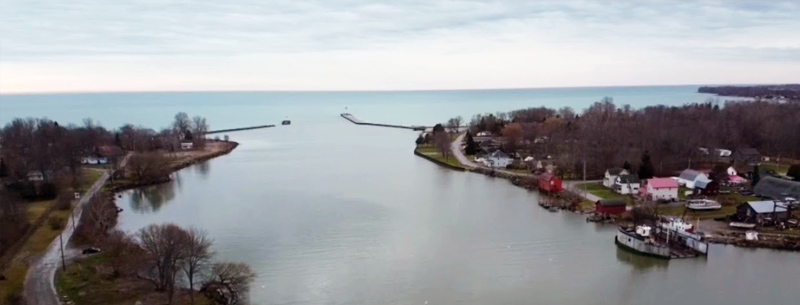
- Port Maitland Beach: 1 km stretch of sand and cobblestone. Facilities include a grassy picnic area, change rooms, parking and lifeguard services.
- Salt Water Fishing: Take your rod and reel to the Port Maitland wharf, and see what you catch. The local fishermen try for flounder, mackerel, and pollock.
Sanford
Sanford is typical of villages that dot the coast in Yarmouth & Acadian Shores. It was settled as a fishing community in the 1700s and continues to this day. There is a cemetery that contains the first settlers, 2 churches, old farm fields, and the requisite working wharf at the bottom of a steep hill. The wharf is home to the world’s smallest drawbridge. If you are lucky enough to visit in September or October, you may find a fisherman preparing ropes, repairing lobster traps or painting buoys.
- World’s Smallest Drawbridge: located at the Sanford Wharf. Feel free to explore and walk over this “foot-traffic only” bridge.
Tusket
Picturesque Tusket, on the banks of the Tusket River, was settled in 1785 by Dutch United Empire Loyalists from New York and New Jersey. As seen by the architecture of many fine older homes, the village prospered as a major shipbuilding center. There are legends surrounding the famous “hanging oak” which sits at the foot of the country roads leading to villages such as Amirault’s Hill, Sluice Point, and Morris Island. Be sure to stop at the Courthouse to get the full scoop.
- Ste Anne Church: a stunning romanesque beauty from 1900 featuring paintings on ceiling and sanctuary walls. Find all the crosses hidden within the Church.
- Historic Chapel at Rocco Point: commemorates the founding of the Catholic Church in Southwest Nova Scotia, .5 km walking trail on site. Described as “a beautiful, peaceful refuge.”
- Argyle Township Court House & Gaol: Canada’s oldest standing courthouse features Jailer’s Quarters, the Prisoners’ Cellblock, as well as “The Cell” gift shop. The second floor houses the Court Room and the Judge’s Chambers. The new state-of-the-art archival facility is truly a genealogist’s paradise
Church Point
Church Point is where you will find the Clare Visitor Information Centre located in the Rendez-vous de la Baie on the campus of the only French university in Nova Scotia, Université Sainte-Anne. The campus is the site of many events, such as the Festival Acadien de Clare and home to the centre acadien archives, a repository for historical and genealogical information pertaining to Acadians. Behind the university is the Church Point lighthouse and historic site. Neighboring the campus is Saint Mary’s Church, constructed in the form of a cross with a steeple reaching 185 feet. Behind the church is a tranquil walking path leading out the shore and gazebo.
- Centre Acadian archives: a collection encompassing 18th-20th century photos, newspapers, books, and an oral collection of Acadian testimonials.
- Saint Mary’s Church Museum: Largest wooden church in North America. Features photos and historical data. Bilingual tours are available. Admission 2$
- Rendez-vous de la Baie, an Acadian Cultural and Interpretive Centre comprising of the Art Gallery “Le Trécarré”, an internet café, souvenir boutique, Acadian Exhibits and Museum and a Visitor Information Centre. Here you will also find the Marc-Lescarbot Theatre and cinema as well as an outdoor stage where many cultural activities take place.
Saulnierville
Saulnierville is home to one of the oldest parish churches in the region, Sacred Heart Church, built in 1882. The nearby village of Bangor received its name from Bangor, Maine due to their mutual involvement with forestry. While in Clare, tune your radio station to 104.1 FM and listen to the Acadian French being spoken.
- Bangor Sawmill Museum: 19th-century water-powered turbine sawmill.
- Sacred Heart Church: features unique stained glass windows, awe-inspiring gold-accented altar, and handcrafted woodwork.
- The Clare Golf and Country Club located in Comeauville offers 18 holes, all with a distinctive character.
Meteghan
The Village of Meteghan is centered on the fishing industry. The local wharf is home to scallop draggers, trawlers, herring seiners, and groundfish and lobster boats. The A.F. Theriault Shipyard in Meteghan River is one of the largest shipyards in Atlantic Canada. As a result of Meteghan’s ocean-oriented lifestyle, rum-running became rampant here during the 1920s. There is even a “Smuggler’s Cove,” so named as its ocean-carved cave was a favorite location to hide contraband during prohibition.
- St. Alphonse Church: A twin steeple wooden church featuring hand-painted murals and a grotto.
- Smugglers Cove Provincial Park: A picnic park, dramatic coastal views and look-off, staircase to the ocean floor, interpretive panels, and washroom facilities.
